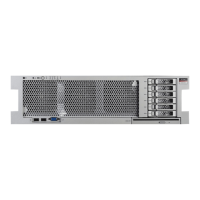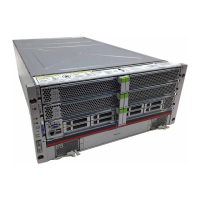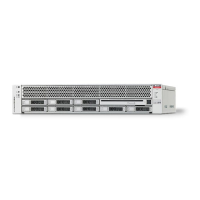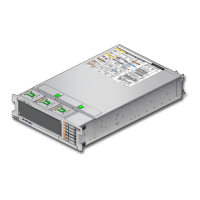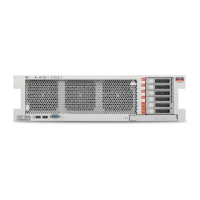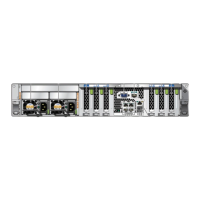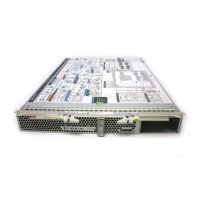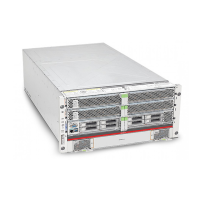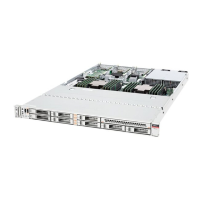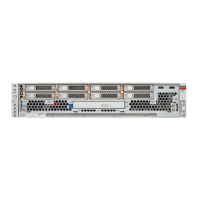Understanding PCIe Root Complex Connections
Servicing PCIe Cards 151
PM CPU Switch I/O Slot Root Complex Path
0 0 1 3
/pci@340/pci@1/pci@0/pci@6
0 1 2 9
/pci@380/pci@1/pci@0/pci@a
0 1 3 11
/pci@3c0/pci@1/pci@0/pci@e
1 2 0 2
/pci@400/pci@1/pci@0/pci@c
1 2 1 4
/pci@440/pci@1/pci@0/pci@c
1 3 2 10
/pci@480/pci@1/pci@0/pci@4
1 3 3 12
/pci@4c0/pci@1/pci@0/pci@8
2 4 1 5
/pci@500/pci@1/pci@0/pci@e
2 4 2 7
/pci@540/pci@1/pci@0/pci@e
2 5 3 13
/pci@580/pci@1/pci@0/pci@a
2 5 4 15
/pci@5c0/pci@1/pci@0/pci@8
3 6 1 6
/pci@600/pci@1/pci@0/pci@8
3 6 2 8
/pci@640/pci@1/pci@0/pci@8
3 7 3 14
/pci@680/pci@1/pci@0/pci@4
3 7 4 16
/pci@6c0/pci@1/pci@0/pci@4
Note - If you are upgrading the server, return to “Server Upgrade Process” on page 59.
Related Information
■
“Root Complex Connections (Two Processor Modules)” on page 151
■
“PCIe Card Installation Guidelines” on page 153
■
“Server Upgrade Process” on page 59
Root Complex Connections (Two Processor
Modules)
This diagram illustrates the root complex connections between the two processor modules and
the 16 PCIe I/O slots in a half-populated server. Each CPU supports two I/O root complex
fabrics. Each root complex connects to four I/O slots through two of five multiplexing switches.
